#tanaka akio
Text
no context torisai and makokuu (+tanaka-san)




i was having too much fun with this app fr
#art#doodle#gif#not giving context for the first two#torisai#saiki kusuo no psi nan#saiki k#saiki kusuo no ψ nan#shinseiki idol densetsu#kanata seven change#tanaka akio#akio tanaka#teruhashi makoto#makoto teruhashi#saiki kusuke#makoto x kusuke#kusuke saiki#kusuke x makoto#reita toritsuka#toritsuka reita#saiki kusuo#kusuo saiki#makokuu#shinseiki idol densetsu kanata seven change
367 notes
·
View notes
Text
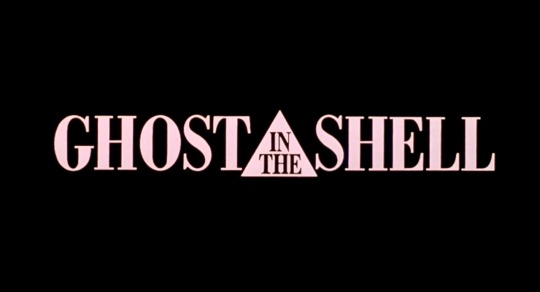


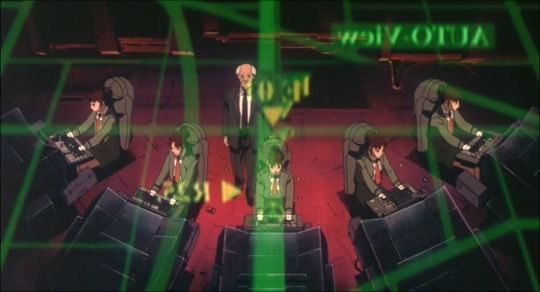
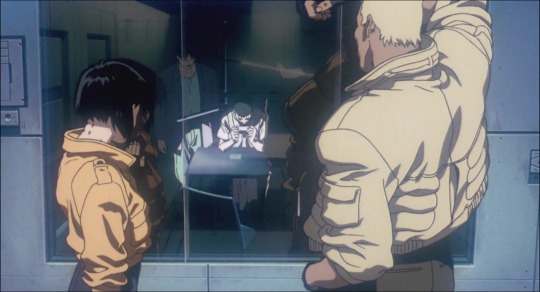
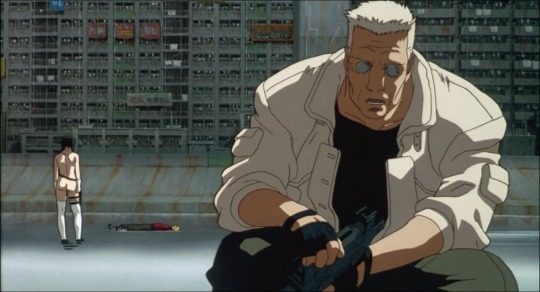
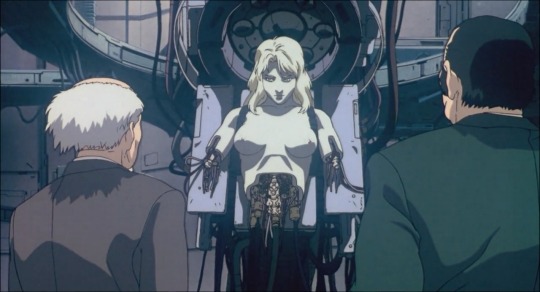

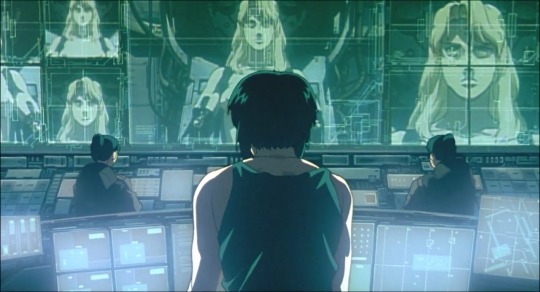
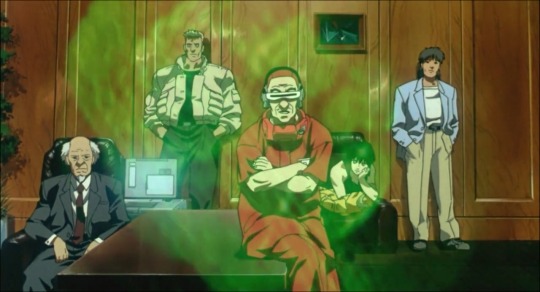
Ghost in the Shell (1995)
Director - Mamoru Oshii, Cinematography - Hisao Shirai





"There's nothing sadder than a puppet without a ghost, especially the kind with red blood running through them."
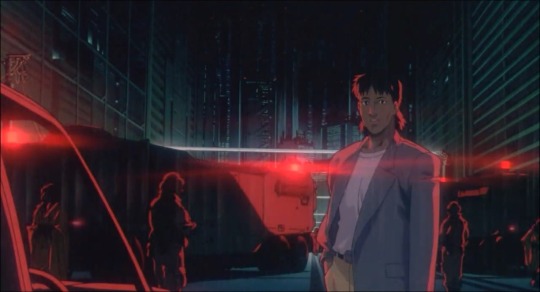


#scenesandscreens#ghost in the shell#mamoru oshii#Hisao Shirai#Tamio Ōki#Yutaka Nakano#Tesshō Genda#Mitsuru Miyamoto#Kazuhiro Yamaji#shigeru chiba#Atsuko Tanaka#maaya sakamoto#akio otsuka#Iemasa Kayumi#Koichi Yamadera
198 notes
·
View notes
Text
ok i get why anthy has creature of delirium now
#rgu ramblings abound:#i just assumed she had many-faced as in. socially. shifting to be whatever the current Engaged wants#but no yeah ep 23. she does do that.#what in the (end of the) world were those hands during ep 22 though#like yeah yeah time is fucked so the hourglass is blue for illusion#tokiko's lipstick on the teacup was orange so like... juri-color. hopeless relationships? i cant pin it down in words but yknow what i mean#but what was the black cats teacup butterfly guys holding hands etc about? might be missing cultural context. ill read some analyses later#god mikage is such a good character though. WILL miss him going ''fukaku motto fukaku''.#i know akio is the patriarchy but like. is he... a reverse bodhisattva or something????????????????????????????????????????????????????????#keeping people in the schoolgrounds-of-not-letting-go-of-the-past??????????????????????????????????????????????????????????????????????????#..himemiya under orders from himemiyas brother pretended to be mamiya trying to get people to kill himemiya so mamiya could become himemiya#not quite ''vergil teamed up with vergils brother and vergils son to kill vergil so vergil could become vergil'' but close enough#saionji is the only one sweating during the intro. wonder what that means#i saw an utena out-of-context compilation before watching the show and like#nanami lesbian moment which i have no context for had birds. juri shiori scene had a bird. is birds lesbians???????#the seed program is EXTREMELY utena student council huh.#...i watched a few more episodes before posting#i wrote a whole thing about how i didnt get why anthy was on CoD because they pull the sword out of *her*#and had an epiphany about how she like. used the black rose duelists as vessels and extracted the student council's swords#but nope! she's straight up pulling the sword out of utena now#the subtitles called the elevator a ''gondola'' and... I Don't Think That's What That Is. Like. At All#also god is akio creepy. viscerally uncomfortable man. i wish to Punt him#is the new ed song about jesus??? a full analysis wouldnt fit here but yknow. dante's paradiso mentioned#also! empty motion??? after the primum mobile thing??? that seems important!!! is it referring to the eternal thing? i guess?#from that ooc compilation- touga repeated akio's throbbing engine thing p much verbatim to saionji. something something cycles of abuse#(it WAS an EXTREMELY funny scene though)#huh. not a single man in this show is normal about women. is that a themes thing or#oh wait no. yamada tanaka and suzuki. love those guys. i def didnt have to look up their names what are you talking about#also mamiya i guess but he doesn't count he's dead#was really expecting utena to turn into a car during the saionji duel. like. the whole arena's cars. i know she does it but if not now when
3 notes
·
View notes
Text
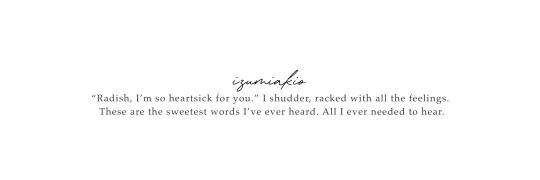




Tokyo Ever After headers
like/reblog if saved © maddiesflame
#headers#tokyo ever after#emiko jean#izumi tanaka#akio kobayashi#book headers#izumiakio#tokyo ever after header#book header#header#izumi tanaka header#izumi x akio#header books
10 notes
·
View notes
Text
Paprika (2006)
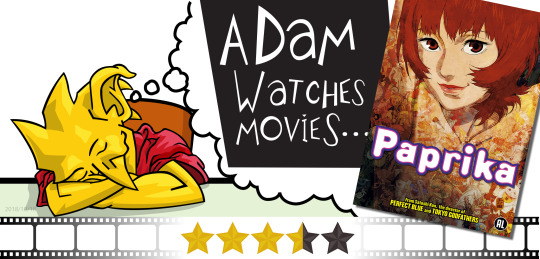
Paprika is a fever dream blast of inspiration that is simultaneously wonderful to behold and nightmare-inducing. It ends on a low note but the trip to that conclusion ensorcels you so completely you may not even care.
In the near future, Doctor Atsuko Chiba (voiced by Megumi Hayashibara) uses the experimental DC Mini device to hop into her patients’ dreams and treat their subconscious using her alter-ego, Paprika. When people exposed to the device, including her boss, Doctor Toratarō Shima (Katsunosuke Hori), start exhibiting erratic behaviour culminating in suicide attempts, Paprika must explore the increasingly bizarre dreams they collectively share to find out who is responsible. How does the strange parade of creatures and living objects connect to her patient, Detective Toshimi Konakawa (Akio Ōtsuka), the scientists responsible for creating the DC Mini, Doctor Kōsaku Tokita (Tōru Furuya), and Kei Himuro (Daisuke Sakaguchi). More importantly, why is this happening?
The medium of animation is perfect for this kind of story. You would need so many special effects to bring the otherworldly sights of the dream world to life it would’ve basically turned into an animated movie anyway. Director Satoshi Kon has so many visual tricks up their sleeve. Paprika’s movements are inhibited only by her imagination. This is shown in the mind-blowing opening scene in which she moves from reflections on windows, to pictures on T-shirts to billboards and anything you could think of to get from one place to another. Many scenes show characters morphing or changing as their consciousness gets sucked into the never-ending parade of weird objects invading everyone’s dreams. When you see it, you don’t know whether to run for the hills screaming or force your eyes open so you don’t miss a second. The colours and creativity in these visuals are so dazzling it doesn’t even matter that sometimes you'll have difficulty understanding the plot.
The film ensnares you in this whirlwind of wonder and unease. You have difficulty differentiating reality from dreams, except when someone wakes up and points out how crazy things were a second ago. That’s the power of this story. And then, we get to the conclusion, which is a major letdown. Not only can you decipher the mastermind behind this big thing based on the character's design, the reason for everything doesn’t really make much sense. You’re left wondering if maybe the translation was bad, or if this story really wasn’t all that good and you were just swept up in all the razzle-dazzle. Ultimately, I say there is more to the film than just what you see. The mystery is compelling and the twist keep you guessing. It’s just everything before the conclusion was so great that when this generic ending comes around, it feels even worse than it is.
The last few minutes of Paprika will split audiences. Either you’ll love it and it’ll become a new favourite, or it’ll leave you with mixed feelings, meaning you’ll be blown away by the movie but content with just seeing it once... maybe two or three times. The sights within are nothing short of incredible so regardless of how you may feel about that finale, it’s worth seeing. (English Dub on DVD, May 24 2019)

#Paprika#movies#films#movie reviews#film reviews#satoshi kon#seishi minakami#megumi hayashibara#toru emori#katsunosuke hori#toru furuya#akio otsuka#koichi yamadera#hideyuki tanaka#2006 movies#2006 films
8 notes
·
View notes
Photo








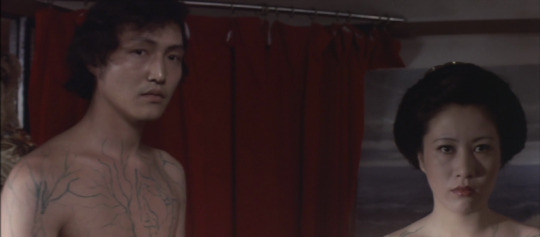

The Watcher in the Attic (1976)
『 江戸川乱歩猟奇館 屋根裏の散歩者 』
Written by Akio Ido いどあきお
Directed by Noboru Tanaka 田中 登
#The Watcher in the Attic#江戸川乱歩猟奇館 屋根裏の散歩者#Akio Ido#いどあきお#Noboru Tanaka#田中 登#Edogawa Ranpo#江戸川 乱歩#Nikkatsu#roman porno#japanese cinema#japanese movies#japanese film#japan#1976#70s japan#70s cinema#cinematography#screencaps#caps#japan film club
14 notes
·
View notes
Text
I don't know why today I was reminded of a manga that, just thinking about it, makes me tremble. No, it's not horror, in the strict sense of the genre, but I could classify it that way because of all the things that happen from the beginning. I mean SHAMO by Izo Hashimoto and Akio Tanaka, a manga that talks about violence in all its forms through the protagonist, Ryo, a boy sent to prison who learns martial arts and evolves into a monster. Is very good! But I also think you have to have the stomach to read it.

4 notes
·
View notes
Text
Akio Tanaka Fun Facts (Korekiyo Shinguji Headcanons)
He Is Bigender
He Is Omnisexual
His Pronouns are She/He/They
He Is the son of Sonia And Gundham, Chieko (Kaede) and Kotoko Is Her younger sisters
He Is 17 Years old
He has a passion For the occult along side Hanako (Himiko)
He Is Born in autumn
He joined Team Danganronpa BC he loves the attetion and Is Kinda selfish
He Is Spanish, Japanese And Colobian
He has black, short hair
He has dark skin
He has Blue eyes
Akio Is calm, creepy and selfish
He hates antropology (kinda ironic)
Wants to be An actor
Has a Scar on His mouth and Is insicure about it
He likes green Chinese tea
#akio tanaka#fun facts#korekiyo shinguji#drv3#Danganronpa#my hcs#headcanons#headcanon#my headcanons#fanfics#fanfiction#fanfic#series#au#oc
4 notes
·
View notes
Text

Lilliput Steps
39 notes
·
View notes
Text

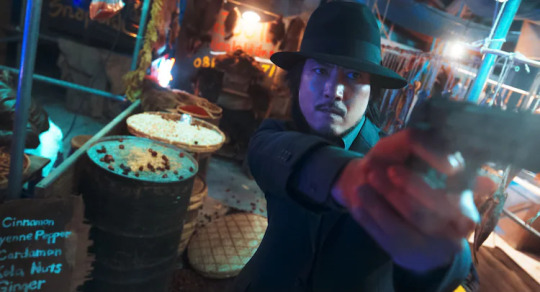
The upcoming live-action spin-off film, Jigen Daisuke 「次元大介」, has a brand-new action-packed trailer!
Narrated by the current Japanese voice actor of the animated Jigen, Akio Ōtsuka, the trailer gives a better look at what we can expect from the film, along with a glimpse at its supporting cast.
Yōko Maki is due to play Jigen's arch-enemy, Adel, an assassin who has lost both a leg and her voice - neither of which stop her from being a formidable foe for our hero.
Kotoka Maki features as Oto, a young girl targeted by the villainous Adel's organization.
Masatoshi Nagase stars as Takeshi Kawashima, an assassin and right-hand man of Adel who possesses impressive mimicry and disguise abilities.
Honami Satō plays Ruri, Kawashima's lover, and Mitsuko Kusabue plays Chiharu Yaguchi, the world's best gunsmith whose run-down watch repair shop serves as a front for her services.
The film is releasing “worldwide” (exact locations to be revealed) on October 13th, 2023, exclusively on Amazon Prime Video. Tetsuji Tamayama, who previously portrayed the character in the 2014 released feature film, will be returning to the role of Jigen. He is the second actor to take the role of Jigen in a live action Lupin III film, with Kunie Tanaka being the first in 1974’s Strange Psychokinetic Strategy.
Yoshimasa Akamatsu (BD ~Akechi Tantei Jimusho, Corpse Party: Book of Shadows) has produced the script for the upcoming film, and Hajime Hashimoto (The Detective Is in the Bar franchise, AIBOU: Tokyo Detective Duo, Shimauma, Signal) is on directing duties.
Watch the trailer on YouTube here: https://youtu.be/UD13qp8-LfE
117 notes
·
View notes
Text

it's pride month ruchi
#art#shitpost#kanata seven change#ruchi shizuru#shizuru ruchi#kanata aoki#aoki kanata#tanaka akio#akio tanaka#saiki kusuo no ψ nan#saiki k#saiki kusuo no psi nan#pride month
14 notes
·
View notes
Text
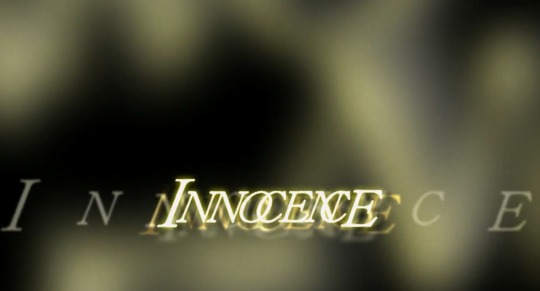
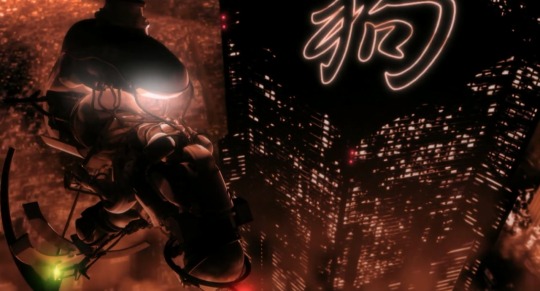


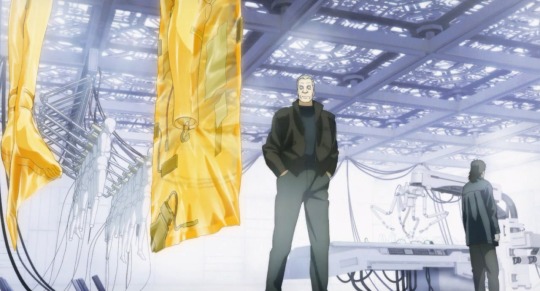
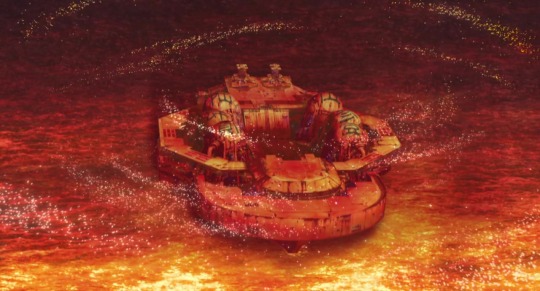

Ghost in the Shell 2: Innocence (2004)
Director - Mamoru Oshii, Cinematography - Miki Sakuma
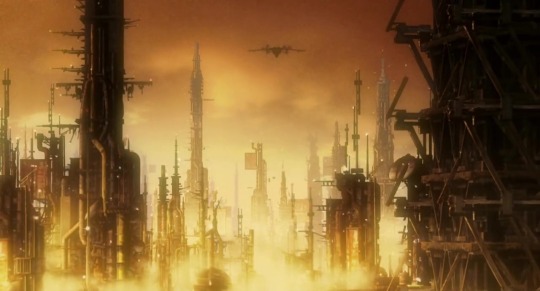
"There's loyalty that protects secrets and loyalty that projects the truth. You cannot serve both masters, so which loyalty is yours?"




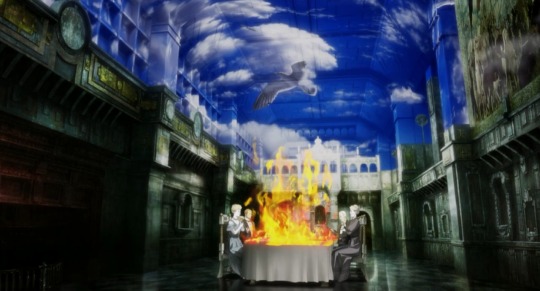
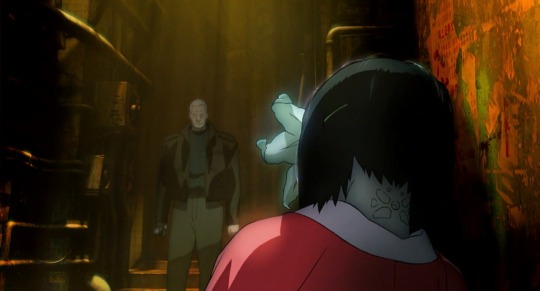


#scenesandscreens#ghost in the shell#Innocence#mamoru oshii#Miki Sakuma#Yutaka Nakano#Masaki Terasoma#naoto takenaka#yoshiko sakakibara#hiroaki hirata#Katsunosuke Hori#Kōichi Yamadera#Tamio Ōki#Akio Ōtsuka#Atsuko Tanaka
97 notes
·
View notes
Text
Five underappreciated anime that I would recommend!
1. Canaan (2009)
This is, from what I understand, an adaptation of a side-story chapter for the visual novel series 428: Shibuya Scramble, guest-written by Nasu Kinoko and guest-illustrated by Takeuchi Takashi. That is to say, the Type-Moon guys — the creators of Tsukihime, Kara no Kyoukai, and the now-legendary Fate/Stay Night. However, Canaan doesn’t take place in the Type-Moon shared universe(s), since it’s for another company’s property.
That being said, the anime adaptation is quite comprehensible on its own terms, likely due to the adaptation being written by the prolific and highly skilled screenwriter Okada Mari (Hanasaku Iroha, O Maidens In Your Savage Season, Mobile Suit Gundam: Iron-Blooded Orphans, Maquia). Her writing imbues the narrative with enough emotional intensity to make up for the occasionally-convoluted nature of the plot, and the backstories of the characters are hinted at just enough so that the viewer can understand their relevance, without taking up too much precious screen time. It can be a little hard to follow at points, but I ended up understanding it decently well anyway.
The production values are very high indeed, due to the anime being produced by P.A. Works, and directed by Andoh Masahiro (Sword of the Stranger, Hanasaku Iroha, O Maidens In Your Savage Season). The action animation is consistently stunning, the characters are beautifully expressive, and the overall look of the show is fantastic.
And the voice acting is an absolute treat, with the lead role of Canaan herself taken by Sawashiro Miyuki, the antagonist role of Alphard taken by Sakamoto Maaya, and Nanjou Yoshino in the role of Oosawa Maria, the POV character for a lot of the story. The supporting voice cast is packed with talent too — Hamada Kenji, Tanaka Rie, Nakata Jouji, Tomatsu Haruka, Hirata Hiroaki, Noto Mamiko, and even Ootsuka Akio in a minor role!
The premise is sort of a science fiction type of thing, but set in the (quasi-)contemporary location of 2000s China, where outside of the sci-fi conceit, the setting is largely realistic. The tone and mood is mostly that of an action thriller, with some nail-biting suspense here and there, but there are some beautifully soft and tender moments as well — often involving Canaan and Maria. Yes, folks, this has yuri in it, although it’s (strongly) subtextual.
Anyway, I would recommend this to people who love Ghost in the Shell: Stand Alone Complex, Kara no Kyoukai, Fate/Zero, and probably also Cowboy Bebop.
2. Tetsuwan Birdy OVAs (1996)
This is distinct from the later adaptation of the original Tetsuwan Birdy (Birdy the Mighty) manga, called Tetsuwan Birdy Decode, which came out in the late 2000s — this one came out in 1996 and was produced by Studio Madhouse in their prime.
The main characters are Senkawa Tsutomu (voiced by Iwanaga Tetsuya), a hapless teenager who gets accidentally killed(!) by an alien spaceship on his way to school one day, and Birdy Cephon Altirra (voiced by Mitsuishi Kotono), a human-looking alien and an intergalactic government agent who saves Tsutomu by merging her body with his. Effectively, they become two people in one body, which can shift between the forms of Birdy and Tsutomu…. except Birdy still needs to deal with all the rogue aliens who threaten the safety of the galaxy, while Tsutomu needs to study for his high school entrance exams. From what I’ve been told, the premise is fairly reminiscent of Ultraman and other classic tokusatsu series.
It’s four tight episodes of classic ‘90s OVA goodness, with a fun and slightly silly sci-fi concept that is nonetheless wrung for some surprisingly effective drama at times. The main thrust of it, though, is action comedy — and it definitely delivers on that front. The fight scenes are superbly animated, including some early-career work from now-legendary animator Suzuki Norimitsu, and the character designs by Takahashi Kumiko (Witch Hunter Robin, Snow White with the Red Hair, Cardcaptor Sakura) are amazingly expressive. Birdy’s striking asymmetrical design is a particular favourite of mine. The direction by Kawajiri Yoshiaki (Cyber City Oedo 808, Ninja Scroll, Vampire Hunter D) is solid, and the writing is quite serviceable despite the brevity and premise.
Overall, I wouldn’t say it’s much of an intellectual watch, but if you just want a fun action-comedy ride with an extremely charismatic female protagonist and stunning animation quality, Tetsuwan Birdy is likely to be your jam. I’d recommend it to people who enjoy classic tokusatsu series, the original ‘90s Sailor Moon anime, and the less-depressing parts of Neon Genesis Evangelion.
3. Noir (2001)
This anime series is perhaps not as underappreciated as the others on this list, but I do still feel that not enough people have seen it. It was made by the studio Bee Train, and it’s the first entry in their so-called “Girls with Guns” trilogy (which isn’t actually a coherent trilogy, since they’re three different stories). The series was made right at the end of the cel-anime era, before the transition to digital colouring and compositing, so the masters were shot on film, but it was also made at the beginning of the slow transition to widescreen TV broadcasts, so it’s one of the very rare cel anime that’s in 16:9. This allows for a beautifully detailed look that, IMO, serves to offset the occasionally-limited animation and the frequent re-use of footage.
The premise is basically “secret assassins in France are caught up in weird intrigue and conspiracies”; as such, there’s a lot of very fun gunplay and kickass fight scenes, but also a lot of suspense and mystery. The writing is a little bit slipshod at times, but it ends up holding together, and the characters and (especially) the fantastically moody vibe make the show worth watching.
The characters are imbued with a lot of life and colour, both by their extremely attractive designs and by their voice actors’ wonderful performances. Mireille Bouquet, a young Corsican assassin and one of the two protagonists, is voiced by Mitsuishi Kotono; Yuumura Kirika, the other main protagonist who is a Japanese schoolgirl who has seemingly lost all her memories (but not her exceptional assassin skills), is voiced by Kuwashima Houko; and the mysterious Chloe, who shows up partway through the show, is voiced by Hisakawa Aya. There are definite yuri vibes between Mireille and Kirika, but as with Canaan, it’s all subtextual.
The main draw of the show, though, is its phenomenal soundtrack, courtesy of Kajiura Yuki (.hack//Sign, Kara no Kyoukai, Fate/Zero, Sword Art Online, Demon Slayer) in her very first anime scoring gig. It’s at times propulsive, at times dark and moody, at times beautifully serene, at times melancholy and nostalgic — and it’s utterly memorable.
I would recommend Noir to anyone who likes Canaan, Witch Hunter Robin, Ghost in the Shell, or anyone who just wishes that James Bond were a woman.
4. Flip Flappers (2016)
This anime was produced at Studio 3Hz and directed by Oshiyama Kiyotaka, in a dazzling yet underappreciated directorial debut that was presaged by his impressive animation work on Dennou Coil, Space Dandy, A Letter to Momo, The Secret World of Arietty, and The Wind Rises. Owing to this extremely solid animation background, Oshiyama was able to recruit a lot of prime animation talent for Flip Flappers, and it definitely shows in the stunning sakuga of the wild action sequences that pepper the show’s narrative.
While the fantastic animation is a key draw of this show, the sheer creativity in the worldbuilding, conceptual, and visual design spheres also contribute to its inimitably psychedelic look and feel. The landscapes of the worlds contained in Pure Illusion — the dream-realm that the protagonists enter each episode at the behest of a mysterious scientific organisation — and of the “real” world are whimsical, storybook-like, and slightly “off” in a slightly unsettling but compelling way.
The dreamlike atmosphere pervades the narrative as well — very little about the mechanics of the world is specified out loud, relying heavily on symbolism and visual storytelling to do the heavy lifting for the audience’s understanding. This might be a turn-off for audiences who prefer to have things spelled out for them clearly, but the point of this story is not always to make perfect logical sense, but rather to work on an emotional and metaphorical level. And work, it certainly does.
The episodic structure involving the various worlds of Pure Illusion explores the concept of the Umwelt (the individual sensory “world” of a person or organism), as well as some Jungian concepts and archetypes, in order to express the strange and sometimes-scary developmental stage of adolescence. The characters of Cocona (voiced by Takahashi Minami) and Papika (voiced by Ichimichi Mao) undergo a metaphorical and literal puberty, a coming-of-age similar in some ways to that experienced by the protagonist of FLCL, but with significantly more yuri. In fact, this show has the most outright yuri of any of the anime on this list. But that isn’t very strange for what is essentially a psychedelic magical-girl show: lots of magical-girl anime seem to include homoerotic vibes in some form or another, from Sailor Moon to Nanoha to Madoka.
There are some minor flaws in the storytelling towards the end, IMO, but overall it’s a wonderfully impactful emotional journey to watch Flip Flappers. Plus, the OP and ED are both extraordinarily catchy tunes that I’ve found myself humming on many an occasion.
I’d recommend this anime to anyone who loves weird magical-girl stuff, weird yuri, and/or amazing action animation.
5. Claymore (2007)
An adaptation of the manga by Yagi Norihiro, this anime is considered by many to simply be “basic”, or at least simply “inferior to the manga”. Now. I haven’t read the original Claymore manga (yet! I plan to eventually), but I found this anime to be compelling nonetheless. And if it really is the case that the manga is better, then I definitely look forward to diving in.
Having been produced by Studio Madhouse in the mid-2000s, it’s unsurprising that the vast majority of this anime was outsourced to Korean animation studio DR Movie, a longtime powerhouse subcontractor for both Japanese and American animation alike. That said, the direction of Tanaka Hiroyuki (director of a portion of Hellsing Ultimate and frequent close collaborator of Attack on Titan director Araki Tetsurou) remains sharp, compensating for the sometimes-limited animation with good storyboarding and a strong sense of mood and atmosphere.
Another aspect of Claymore which helps make up for the occasional visual shortcomings is the soundtrack by Takumi Masanori. The compositions are a mix of harder rock and electronic elements with a strong orchestral backbone, as befits a dark-fantasy setting and mood — the faster pieces are edgy and propulsive, very appropriate for the bloody action scenes, and the calmer pieces have a melancholic beauty to them that sticks in one’s memory. I wish the soundtrack were on Spotify, but alas, it is not.
The other sonic element that helps this anime out immensely is its absolutely STACKED voice cast. The main character, Clare, is voiced by Kuwashima Houko, in a fantastic yet understated performance. The other main character, Raki, is voiced by the less-well-known Takagi Motoki, but nearly all the other roles — including many bit parts — are filled with industry legends. Teresa is voiced by Park Romi, Miria is voiced by Inoue Kikuko, Irene is voiced by Takayama Minami, Rubel is voiced by Hirata Hiroaki, Priscilla is voiced by Hisakawa Aya, Ophelia is voiced by Shinohara Emi, and Jean (whom I cannot help but ship with Clare: there’s so much homoerotic tension there!) is voiced by none other than Mitsuishi Kotono. Yes, they got three of the original Sailor Senshi VAs — and I don’t know why that’s funny to me, but it is. And all of the voice actors deliver killer performances.
The premise of the show, before I completely forget to explain it, is that of a dark fantasy world where demons called youma ravage human settlements, with only the titular Claymores to protect humanity. They are a guild of platinum-haired and silver-eyed warrior women who possess superhuman fighting abilities, due to the fact that they’ve been fused with youma essence, and wield the massive broadswords that give them their name. Basically, (s)he who fights monsters must become (partly) a monster to do so.
I’ve heard the vibe of Claymore compared to manga like Berserk, and I don’t know how true that is (not having read the latter for myself), but there’s certainly a lot of bleakness and monstrosity in this fantasy tale. However, the Claymore manga was published in none other than Weekly Shounen Jump, so it’s perhaps unsurprising that the story remains resolutely forward-looking, the protagonists’ arcs focussing on the power of grit, determination, true friendship and loyalty, and protection of the weak and downtrodden. It’s never cynical or sarcastic — always straightforward and sincere despite the frequent darkness of the story.
The writing is consistently solid, even through the controversial anime-original ending (the manga continues long past the point where the anime cut things off), so I’m not sure who to point to for that: Yagi Norihiro for writing the original material, or Kobayashi Yuuko (JoJo’s Bizarre Adventure, Attack on Titan s1-3, Kakegurui, Casshern Sins) for adapting it cleanly for the screen? Either way, it made me want to read the manga to experience more of these compelling characters and their travails.
I would recommend this anime to those who enjoy Kill La Kill or RWBY, or just to those who enjoy powerful women hacking at monsters with massive weapons and making lots of blood spray out.
#anime recommendation#anime recs#flip flappers#tetsuwan birdy#birdy the mighty#claymore#noir#noir 2001#canaan#long post#personal#anime
118 notes
·
View notes
Text
The Official Certified Ψ Birthdays List™
If there's anything I missed or a character you'd like me to add, let me know!

January:
1.01 - Mineo Nobunaki (Saiki Kusuo No Ψ Nan)
6.01 - Kouno Jun (Our Hero Studies)
8.01 - Tadatsugu Takayuki (Mikami Case Files)
25.01 - Satou Hiroshi (Saiki Kusuo No Ψ Nan)
February:
14.02 - Rifuta Imu* (Saiki Kusuo No Ψ Nan)
22.02 - Saitou Marietta (Kanata Seven Change)
25.02 - Kouno Fukue (Our Hero Studies)
28.02 - Arisu Makino (Saiki Kusuo No Ψ Nan)
*Imu has two different birthdays in the manga and a later released guidebook, so she celebrates twice! The February ones comes from the guidebook, the April Date comes from the manga (likely outdated).
March:
2.03 - Hinoki Nozomi (Our Hero Studies)
3.03 - Kurusu Yayumi (Our Hero Studies)
3.03 - Daigo Domon (Kanata Seven Change)
4.03 - Teruhashi Makoto (Saiki Kusuo No Ψ Nan)
7.03 -Jaga Yokota (Saiki Kusuo No Ψ Nan)
3.10 - Kimura (Our Hero Studies)
24.03 - Saiki Kumi (Saiki Kusuo No Ψ Nan)
25.03 - Saiki Kumagoro (Saiki Kusuo No Ψ Nan)
April:
10.04 - Shinoda Takeru (Saiki Kusuo No Ψ Nan)
12.04 - Takahashi (Saiki Kusuo No Ψ Nan)
12.04 - Koriki No.2 (Saiki Kusuo No Ψ Nan)
13.04 - Imu Rifuta (Saiki Kusuo No Ψ Nan)
15.04 - Mera Chisato (Saiki Kusuo No Ψ Nan)
24.04 - Mikami Aiko (Saiki Kusuo No Ψ Nan)
May:
5.05 - Ikari Keinosuke (Kanata Seven Change)
9.05 - Nendou Riki (Saiki Kusuo No Ψ Nan)
13.05 - Saiki Kuniharu (Saiki Kusuo No Ψ Nan)
14.05 - Saiki Kurumi (Saiki Kusuo No Ψ Nan)
19.05 - Kongou Tsuyoshi (Saiki Kusuo No Ψ Nan)
24.05 - Yoshida (Our Hero Studies)
June:
6.06 - Iridatsu Yuuta (Saiki Kusuo No Ψ Nan)
8.06 - Oono Ishio (Our Hero Studies)
10.06 - Haganeno Ken (Our Hero Studies)
10.06 - Yarizaki Hideo (Our Hero Studies)
11.06 - Yumehara Chiyo (Saiki Kusuo No Ψ Nan)
14.06 - Kouki Sawakita (Saiki Kusuo No Ψ Nan)
16.06 - Saiki Kuusuke (Saiki Kusuo No Ψ Nan)
18.06 - Hairo Kineshi (Saiki Kusuo No Ψ Nan)
19.06 - Zolbe (Saiki Kusuo No Ψ Nan)
27.06 - Nakanishi Kouta / Chouno Uryoku (Saiki Kusuo No Ψ Nan)
July:
7.07 - Kanata Aoki (Kanata Seven Change)
7.07 - Ruchi Shizuru (Kanata Seven Change)
7.07 - Holy Lance Academy Headmaster (Our Hero Studies)
12.07 - Cafe Mami Manager (Saiki Kusuo No Ψ Nan)
29.07 - Nakanishi Shinya (Saiki Kusuo No Ψ Nan)
August:
6.08 - Teruhashi Kokomi (Saiki Kusuo No Ψ Nan)
16.08 - Saiki Kusuo (Saiki Kusuo No Ψ Nan)
24.08 - Shuuji Murata (Saiki Kusuo No Ψ Nan)
28.08 - Suzumiya Hii (Saiki Kusuo No Ψ Nan)
September:
2.09 - Kuboyasu Aren (Saiki Kusuo No Ψ Nan)
5.09 - Akechi Touma (Saiki Kusuo No Ψ Nan)
5.09 - Takeuchi Riki (Saiki Kusuo No Ψ Nan)
7.09 - Aiura Mikoto (Saiki Kusuo No Ψ Nan)
8.09 - Saiko Metori (Saiki Kusuo No Ψ Nan)
10.09 - Toritsuka Reita (Saiki Kusuo No Ψ Nan)
21.09 - Matsuzaki (Saiki Kusuo No Ψ Nan)
23.09 - Soul Shout (Saiki Kusuo No Ψ Nan)
26.09 - Kazuya Ikemi (Saiki Kusuo No Ψ Nan)
29.09 - Kase Hinako (Kanata Seven Change)
October:
3.10 - Kaidou Shun (Saiki Kusuo No Ψ Nan)
10.10 - Tanaka Akio (Kanata Seven Change)
14.10 - Mrs Kaidou (Saiki Kusuo No Ψ Nan)
24.10 - Madouichi Jou (Our Hero Studies)
24.10 - Nendou Midori
25.10 - Mikami Mei (Mikami Case Files)
November:
13.11 - Hitori Shuu (Our Hero Studies)
29.11 - Anpu (Saiki Kusuo No Ψ Nan)
December:
3.12 - Itano Yoriko (Saiki Kusuo No Ψ Nan)
4.12 - Watsuki Madoka (Our Hero Studies)
8.12 - Ibaraki Muchiko (Our Hero Studies)
26.12 - Asou Shuuichi-sensei

#sai-birthdays#asouverse#saiki kusuo no ψ nan#saiki kusuo no psi nan#saiki k#the disastrous life of saiki k#saiki kusuo#kusuo saiki#our hero studies#boku no watashi no yuushagaku#kanata seven change#asou shuuichi#shuuichi asou#aso shuuichi#shuuichi aso#mikami case files
41 notes
·
View notes
Text
Because we all hate fandom wiki, here are the birthdays of every Saiki K. character that had one listed:
January 1: Mineo Nobuaki (Alphonse Calcifer Raiden)
January 4: Kumi Kouji
January 7: Azuma Muto
January 7: Kanda Pinsuke
January 8: Tadatsugu Takayuki
January 25: Satou Hiroshi
February 20: Masuda Shuuji
February 28: Makino Arisu
March 4: Teruhashi Makoto
March 7: Yokota Jaga
March 21: Saiko's Father
March 24: Saiki Kumi
March 25: Saiki Kumagoro
March 28: Morikawa Minoru
April 5: Nakamaru Kousaku
April 6: Mishima Nobuaki
April 9: Hanako (the tiger)
April 10: Shinoda Takeru
April 10: Makishima Seiya
April 13: Imu Rifuta
April 12: Takahashi
April 12: Koriki No. 2
April 15: Mera Chisato
April 24: Mikami Aiko
May 4: Tanaka Ichirou
May 9: Nendou Riki
May 9: Pushi (the cat)
May 13: Saiki Kuniharu
May 13: Busujima Susumu
May 13: Clairvoyance Mikiko
May 14: Saiki Kurumi
May 19: Kongou Tsuyoshi
June 3: Yuuta Iridatsu
June 11: Yumehara Chiyo
June 14: Kouki Sawakita
June 16: Saiki Kuusuke
June 18: Hairo Kineshi
June 19: Zolbe
June 27: Chouno Uryoko
June 29: Tanihara Kenji
July 12: Café Mami's Manager
July 12: Manabe Baiku
July 20: Akanishi Shinichi
July 23: Niwayama Kyuuji
July 29: Nakanishi Shinya
August 1: Kihachi Bunta
August 6: Teruhashi Kokomi
August 16: Saiki Kusuo
August 18: Haruno Akio
August 24: Murata Shuuji
August 28: Suzumiya Hii
August 29: Nishi Soujirou
September 2: Kuboyasu Aren
September 5: Akechi Touma
September 5: Takeuchi Riki
September 7: Aiura Mikoto
September 8: Saiko Metori
September 10: Toritsuka Reita
September 19: Oohori Kouichi
September 21: Matsuzaki
September 23: Soul Shout
September 26: Ikemi Kazuya (Michael)
October 3: Kaidou Shun
October 14: Mrs. Kaidou
October 14: Ooshima Yuuji
October 22: Kuramochi Shinsuke
October 31: Nendou Midori
November 10: Hotei Tomotaka
November 20: Takizawa Kazushi
November 29: Anpu
December 3: Itano Yoriko
December 13: Shima Kyouka
December 15: Honekawa Kinsuke
December 16: Matsuda Ippei
December 24: Onimatsu Gokuya
December 27: Sugiyama Haruo
#most of these are one off or side characters#but i felt like i should include them#i took all these off the wiki so im hoping they are right#and why are there birthdays for all the kokomins but none for the baseball club#thats a crime#saiki k#tdlosk#the disastrous life of saiki k.#saiki k birthdays#screw fandom wiki
49 notes
·
View notes
Text
Kraken of the Sea | Earthbound | Akio Ohmori, Ritsuo Kamimura, Keiichi Suzuki, Hirokazu Tanaka
8 notes
·
View notes